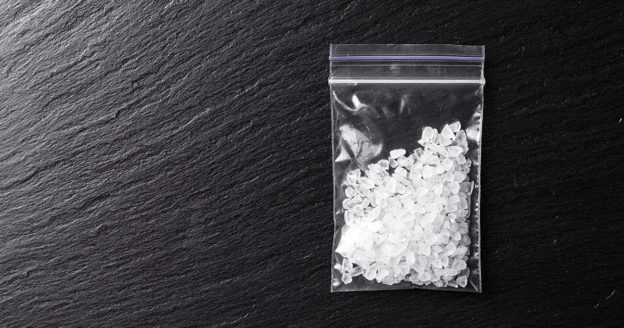The opioid crisis has demanded our attention for so long, we’ve overlooked other drugs that are quietly creeping up. In February 2018, the New York Times ran an article called, Meth, the Forgotten Killer, is Back. And it’s Everywhere. This isn’t a matter of opinion – the numbers don’t lie. Data from the 2017 National Survey on Drug Use and Health reported that 774,000 people age 12 and over were meth users, whereas the year before, there were only 667,000 meth users.
Let’s learn more about what meth is, how to tell if someone is addicted and reasons for its sudden return. We’ll also discuss options for detox and drug rehab in California. If you or someone you love is addicted to crystal meth, contact Pax House Recovery at 877-837-5403. We can help.
What is Meth?
Methamphetamine, or meth for short, is a man-made stimulant. It has many street names, such as crack, ice or crystal. The drug comes in a white powder or pill form and has a bitter taste. The effects are similar to caffeine or cocaine, though far more powerful.
Like other stimulants, meth increases energy, focus and physical activity. In the body, it raises blood pressure, body temperature and heart rate. Not only are users supplied with excess energy, but also they get a sense of euphoria that goes beyond any other substance. This happens because meth elevates dopamine, a neurotransmitter that rewards the brain.
With so much dopamine flooding the brain, the user feels euphoric for as long as 8-12 hours. A meth addict will usually follow a crash-and-burn cycle that involves being high for days or weeks at a time, crashing and starting all over again.
How Can I Tell if Someone is Using Meth?
Meth can be used in multiple ways. It can be smoked, snorted, swallowed or injected. It’s important to keep an eye out for paraphernalia that may be used to consume the drug, such as pipes, needles, spoons, straws, foil or broken light bulbs. However, you can usually tell from a physical or emotional standpoint when someone is abusing meth. This drug is not easy to hide.
Generally speaking, meth causes extreme changes in behavior. Addicts often stay up for days and then crash. They are also irritable and tend to have extreme mood swings and paranoia. Another symptom to watch for is “tweaking,” which refers to impulsive and erratic behaviors for hours at a time. Examples include picking at an arm or face or taking things apart.
Meth users also have certain characteristics. When on the drug, they tend to sweat excessively, and have large pupils and a body odor that smells like ammonia. It’s also common for the body to deteriorate, as meth is a harsh stimulant that suppresses the appetite. Therefore, meth addicts tend to lose weight and experience dental decay and hair loss.
Why is Meth Making a Comeback?
Meth was prominent back in the 1990s when people used cold medicine and household cleaning products to make their own versions of the drug. To address this problem, the Combat Methamphetamine Epidemic Act limited over-the-counter access to cold medications with certain ingredients, including pseudoephedrine. This decision significantly lowered domestic meth lab seizures. Unfortunately, the drug never went away. Production was just moved.
Today, most of our meth is made in superlabs in Mexico. These superlabs are run by drug cartels that are able to make crystal meth cheaper and purer than ever before. Most tests show that meth coming from Mexico is 90 percent pure, though some batches are up to 99 percent pure. And, there is a lot of it to go around.
The cartels are also resourceful about getting meth over the border and into the U.S. Like other drugs, meth is smuggled into the country through legal ports of entry. According to the U.S. Border Patrol, meth seizures have multiplied tenfold in less than a decade. California and Arizona are two areas where meth is believed to be falling through the cracks, despite the fact that meth seizures are up 500 percent.
The reason why meth is hard to detect is because it starts as a liquid and is crystallized once over the border. The drug is sometimes disguised as wiper fluid, juice or gasoline. When it makes it into the U.S., the meth is crystallized and transported everywhere, from large cities to small, rural communities.
Is There a Way to Quit Meth Use?
Meth withdrawal can be very serious, though how serious depends on a few factors, such as how much meth a person uses, how long they’ve been using meth and underlying health problems.
In general, meth withdrawal is an uncomfortable but natural process that involves a predictable set of symptoms. As the drug wears off, withdrawal begins and last for a few days, or until the body learns to adjust without crystal meth. However psychological symptoms can last much longer.
Even though meth withdrawal is typically not fatal, it’s still in your best interests to detox in a medically supervised drug rehab in Pasadena CA. With around-the-clock attention, it’s possible to treat symptoms and make the detox process more tolerable.
Once the detox process is complete, it’s best to continue with a treatment program that includes counseling, medication for a dual diagnosis and 12-step meetings. If you have a severe addiction and an unhealthy living environment, we strongly recommend an inpatient program that offers 24-hour support and sober living in Pasadena. If you relapsed and are getting back on your feet, an outpatient program may be best.
Get Help for a Meth Addiction Today
Everyone’s experience with meth is unique. That said, many recovering addicts do struggle with long-lasting effects, such as depression, irritability, cravings, psychosis and exhaustion. This uphill battle is made easier when you choose the right drug recovery program in Pasadena.
Pax House Recovery offers a full spectrum of care that includes inpatient and outpatient rehab, aftercare treatment and a sober living program. Call us today to learn more about our options for treating a crystal meth addiction.


